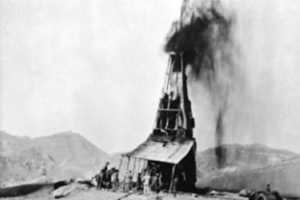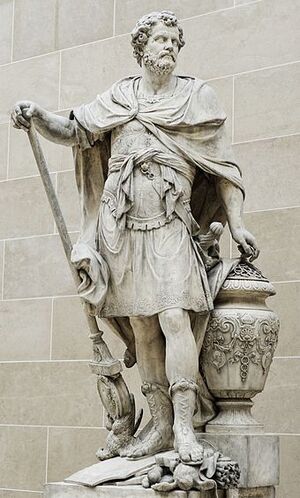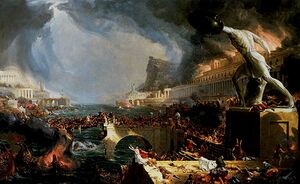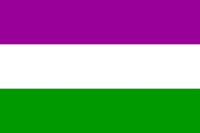History of North Bardonia
History
Prehistory and Ancient History
Beginning roughly 160,000 thousand years ago the people of the East Magnaterra naturally moved west for more land. This ‘Slow Migration’ eventually to the nomadic Kowri people to settle in the North of North Bardonia continuing a nomadic lifestyle over the vibrant lands. Around 100,000 years ago another group of people coming instead from the west begin the ‘Second Slow Migration’, these people called the Bedouin which continues to roam in the south to this day chose the western coast to settle. Yet again nearly 50,000 years ago another group coming from the east escaping persecution arrived in a ‘Third Slow Migration’ to take over the over all parts of the Western Coastline. During this time early settlements have been noted dotting around the coast, the oldest of which, known as ‘Mothbridge’ is dated to around 32,000 years ago.
In more recent history around 2000 B.C.E. The first Old Faith settlers fleeing from persecution in the north crossed the Straits of Fate in the nation of what’s known known as Jaredistan and Tribia where a short passage allowed for small rafts to cross the Penitusian allowing many peoples to travel into the region of Western Magnaterra. These settlers chose to move east and eventually discovered themselves in the ‘Carthia’ (Promised) River Valley. Here, where the Carthia meet the sea, they built a dozen towns in the delta (ada) of the river and began using agriculture and aquaculture naming this area the Promised Delta (Carthiada). Slowly as Carthiada expanded the people within it would be divided into towns where each town would via for food, land, trade and weapons.
Carthiada
Around thousand five hundred years the settlement was established a group of northern Kowri people raided Carthiada, destroying many of the towns and settlements and in combination with major flooding the following year much of the towns and crops were destroyed. In order to counteract the events of the previous year and with the supposed coming of a saint of the knowing, Saint Martin of the Water, the city build walls surrounding itself and built large scale farms going up the river. St Martin helped build the first lighthouse and then became the city’s first Archpriest and built the Cathedral of Carthiada (also known as the Cathedral of St Martin of the Water).
Following the completion of the dock in 500 BCE Carthiada began rapidly expanding and conquer surrounding areas as well as becoming a trading empire in the eastern Penitusian Sea. This age of rapid expansion would grow under the Hegemony (and its Hegemons) with its connection to Biggonia in the city of Chabendar in 150 CE. This age was overseen by the greatest General of North Bardonia and Carthiada, Polemarch Ispilheous Draka.
In the 200 CE following the fall of Chabendar the Long Decline of Carthiada would begin.
The slow collapse of the Carthiadan Empire from the 3rd century to the 12th century first major action would be the Great Slave Revolt of 283 where slave leader Bel Mosualy would lead the slaves of Carthiada in a major slave revolt, Follow major military defeats in the subject states of Carthiada to it west it would begin the age of piracy to supplement lack of trade. These raids would pester much of the Penitusian coast and were a principal part of the downfall of Carthiada as a trade power. As the nations around it grew more aggressive and the once mighty Carthiadan fleet was depleting after loses and lack of wood to restore the fleet.
It was here in the early 850’s that a Plutocratic Oligarchy would form, led by the Polemarch, a once meaningful position as the leader of the armies now lowered to a state of de jure leader of the state. The Council of State (Cöincil oz Stadt) was the real power behind the collapsing and deteriorating state of Carthiada. Across its peninsula was the only major Carthiadan controlled port not located in the Carthia Sea (Promised Sea) was Krondor (Crowns Gate). Krondor in 862 would declare independence and form its own republic establishing itself as a trading port much like Ancient Carthiada.
Dark Age & Crusades
For the next 400 years many minor wars were fought as the decline of the Southern North Bardonian peninsula occurred. In the north the blooming Sultanate of Kharistan and its rival in the Mathetists Republic of Cordo Fa (foreshadowing the rise of Mathetism in North Bardonia), as the predecessors state of the Kingdom of Burdoni, allowed both states to advance heavily but both were pinned by the Uiortel mountains and the Penitusian Sea. All the states of the peninsula would be devastated by the Plague of 902, Plague of 1086, and the Plague of 1198.
After the plagues the Mathetist in southern Amnis and Cordo Fa were looking hungry the Carthia River and the Esdean River which provided bountiful food and place to spread Christianity. Specifically, the Archbishop of Cordo Fa called for crusades to take control over Kharistan and Carthiada. This began the First Crusades (from 1203-1221) and the Inquisition (1218-1302).
The Republic of Krondor
The Triarchy
The Triarchy was the governing body of the Republic of Krondor from its foundation in 423 A.D. to its annexation into the Hansan Empire in 1698 A.D. The triarchy as its name suggest is a government by three Triarchs, normally elected by the citizens from three different factions.
- The Elephants:
- The Lions:
- The Hawks: The Hawk faction was the most pro-war faction of the three major factions and was constantly advocating for conflict with Krondors neighbors and colonial rivals.
Leos Crusades
The First Crusade saw the Mathetist states move southwards, bypassing The Sultanate of Kharistan and heading straight for the major cities of Forthlanding and establishing numerous city states (including Piortel and Uiortel) along the way. These city states would expel and execute Non-Mathetists as a part of the Inquisition. The First Crusade would also see the rise of the Principality of Coulthal and it ruling the Dynasty: The Solen.
As the south became more united over the aftermath of the First Crusade the longstanding house of Leftenson would gain there first Nobel title, Lord of Oxbow, in the aftermath of the Tomas Leftenson leading Carthiada’s militias to victory at the Battle of Oxbow. As skirmishes intensified in the aftermath of the First Crusade eventually led to the Second Crusade (1256-1267).
The Second Crusade was more interesting than the First Crusade as there was a lot of military and economic buildup to the Crusade. Bishops in Piortel and Uiortel called for war whilst the Bishop of Forthlanding called against (before being burned as a Heretic). In the south a ‘League of the Knowing’ was formed against the ‘Mathetists League’ of the north. This war would last over ten years with numerous minor battles and skirmishes which would slowly degrade the quality of troops. Its aftermath with the beginning of a dark age which would last for over 500 years would begin.
During the 1400’s and 1500’s numerous traders and pirates would come across the Bardonian coasts. Trading and bring glimpse of prosperity that had once been. Several sackings occurred from 1543 to 1562 where much of the population of North Bardonia fled inland. This down period of Bardonian Civilization became known as the ‘Ravine of Civilization’ or ‘The Little Dark Age’.
“Why do we die… why do we burn… why does civilization fall…. Only the Knowing may know and that is our destined path” -A Time of Tribulation, Magistrate Egmund (1592), Libraries of the Old Faith
It was also around this time that the philosophers, monks, priests, and fellows of the Old Faith realized the the organised coastal settlements was too much of a threat to the Old Faithers and the threat of stealing ancient knowledge was very threatening. They chose to fortify a large mountain settlement close to Carthiada, they called this fortress library Carthiayer Today it remains as the spiritual head of the Old Faith and its highest authority the Magisterium.
Colonization
First Kingdom
First Edvarkian Era
During the first year's post Independence the new kingdom began forming the codes and systems that would make up the bulk of the government over the first three years post-independence. King Edvark, the first truly independent ruler of the whole peninsula, also began playing the game of diplomacy by strengthening the alliances he already had, such as with Buchbach, to maintain the sovereignty of the Kingdom. As a part of this defensive plan for the first three years around 40% of the state coffers flowed into the military, with a small fleet and a decent sized, well trained and equip, army (and by 1911 a small Airforce).
After the conclusion of this 'interim' government a general election was held to fill the halls of the newly constructed parliament and to turn the absolute monarchy into a constitutional one, following the Idaina system of Tayichi. That general election of 1899 saw the election of Paulus Claasen as Minister-President of the Liberal Party (221 seats) with the opposition being formed by the Conservatives (149) and the Farmer-Labour Party (35) and a dozen other smaller parties (45). The Claasen Administration had embarked on a series of land reforms and suffrage reforms that gave all men aged 18 and above the right to vote. Many of these action and political maneuvers were all to help industrialize the nation. By 1909 (End of the Classen Administration) the urban growth had helped boost the population by three million (a feat which occurred again in 1919).
In July of 1908 King Edvark Leftensons health would rapidly deteriorate with His Majesty having suffered a stroke and doctors began fearing for the worse. By the tenth of July the Kings condition had fallen to such a state that the medical technology of the time could no longer help His Majesty and by the twelfth Edvark had died. Immediately his son Crown Prince Edvark ascended to the throne, but his coronation only occurred in October of the same year.
Second Edvarkian Era
The conclusion of the Classen Administration in 1909 also saw the right for women to vote. The female suffrage movement which had started in 1899 had fought for a decade and won their vote under this logic: “While the men were fighting to keep the country free, we we’re feeding them and keeping the books in check”.
In 1909 the electorate choose to elect a more conservative government, the Liberal Party (129) was the opposition with the Conservative Party (171) aligned with the Christian Party (30), the rest of the opposition was carried by the Farmers Labour Party (101) and other minor political groups (19). This government was headed by Sir Phillip Hyde (a Hansan colonist) and began a more frugal approach to governance. The Hyde Administration oversaw the ‘Golden Age’ of the Arts, Literature, and Drama. The culture of North Bardonia flourished and thrived under the short-lived Hyde Administration.
Phillip Hyde’s conservative government would come crashing down after a General Strike (The Dockworkers Strike of 1913) and lead to the Farmer-Labour government of 1914-1923. The General Strike that caused the collapse of The Hyde Administration was started by the Minimum Wage Act which would have lowered the minimum wage by 0.50 Krowns. This and another round of monopolizations that lead to the laying off and lower of wages of around 10,000 dockworkers, rail workers and other industrial laborers lead to the General Strike that forced the governments hand and created a sympathy for the workers.
So, in 1914 the Farmer Labour Party (243) became the governing party with the Liberals (102) again becoming the opposition and the Christian Party (45) and the Conservatives (50) controlling the opposition with again a minority of other parties (10) caring the rest of the Parliament. The Farmer-Labour Government was headed by former Labour Minister Sir Jon Halmant. The Halmant Administration immediately began passing labour reforms benefiting the people and continued the economic growth of the previous Administration.
In 1921 an incident in the wooded terrain of North Bardonia an incident involving a bee would lead to the downfall of King Edvark II. Edvark was known for his love of the outdoors and after a long hunt King Edvark was exploring a patch of flowers where he was suddenly stung by a bee that was in the flowers. By night fall Edvark had died by allergic reaction and was announced dead on the eleventh of June. His eldest son Clemont was placed on the throne in October of 1921.
Clemontian Era
The early Clemontian Era saw Clemont become slowly dissuaded of “Democratic” governance and he would also partake in ludicrously expensive parties. Whilst the Government and his brothers would attempt to reel in his expenditures and escapades his disassociation with politics would be a reason for later actions.
Halmant also began the process of breaking the Trade Monopolies that had dominated industry for the last decade. The Fair-Trade Commission (an organization that remains to this day) investigated and dissolved major monopolies in the coal, dock, steel, rail and other industries. With fair trade secured by 1919 the FLP was re-elected. During the early twenties the popularity of the Farmer-Labour Party would slowly decline with a period of economic stagnation. In 1923 the FLP was forced out by a motion of no confidence leading to a joint Conservative-Liberal-Christain-National (a new political party formed in 1917 and won 12 seats in 1919). This interim government was forced to last far longer than the expected date. The reason: the Great War.
The Great War
With the Great War beginning the Grand Coalition of all political parties was formed with each party gaining a respective ministry and control of a government office. This led to a very unstable coalition that was seen as a necessary government for the Great War.
In 1923 only a few months after the formation of the Grand Coalition King Clemont was dissatisfied by the results of this government and their inability to follow his command to prepare and then declare war on Hansa and gain the spoils of war. So, with allies in the Military he orchestrated a coup on April 15th. The coup was quick and bloodless and over the next month North Bardonia prepared for war.
On May 4th of 1924 North Bardonia would be at war with the Hansans and Clemont would prepare for his grand offensive. The prelude to this declaration was innumerable in papers and plans for the conflict. The War Plans Commission had devised two military plans for the War with Hansa. War Plan Blue: which outline for an invasion of Hansan Vabas, and War Plan Orange; the plan for the inevitable Hansan Invasion from the Straits Settlement of Cordo Fa and other settlements on the states.
Clemont chose to visit his growing army and navy in Uiortel, a decision that would cost him his life. On May 5th while driving through the streets of Uiortel, a member of the Republican militant group the Brothers of the Republic with Anarchist political views stepped out of the crowd and shot Clemont thrice, all shots hit, and he was rushed to the hospital. The assailant was 23-year-old Elian Kalmim, a university student and an anarchist, he would flee and instead of being captured would, on a bridge in the center of the city, shoot himself after yelling “Long Live the Republic”. Clemont would die the next morning and his brother, Edmund, would ascend to the throne.
Edmundian Era
The Hundred Days of Blood
In the aftermath of the conflict and the subsequent economic, social, and political collapse of North Bardonia the National Salvation Party formed by National Republicans with the aim and goal of establishing a national Republican government and nation. They aligned themselves selves with the Freikorps and other political parties such as the Mathesit Democratic League, the Center Party and the New Labour Movement to form a so-called ‘Sanitation Goverment’. The phrase of ‘Sanitation Government’ would become synonymous with the National Salvation Party and National Party governments which ruled from 1933 to 1962.
The Sanitation Government was a coalition of various parties and organizations with the goal of ‘sanitizing’ the country and retiring order, stability and prosperity and over the many years the Goverment would be divided into different factions, mainly three major ones: the Sanitation-Right, formed of the nationalistic, right wing, and religious groups with the government’ the Sanitation-Centre, formed of the majority of three National Salvation Party and embodied National Republicanism; lastly the Sanitation-Left was made up of reformists, moderates and those in favour of Marklyian Economics (a inheritance libertarian and non-interventionist economic strategy).
Thought the mid to late 30’s the economic stabilization of the country will lead to the Sanitation-Centre and National Republicanism evolving into a sort of Cult-of-Personality around the the first President of North Bardonia Alexios Demantus and confirmed to his ideological basis which formed in the trenches of Lughansk during the Great War. His economic policy was more based on centralization and state control, he would form several state-opened companies to operated his economic policy. Some of these companies such as North Bardonian Petroleum, Etsyani-Minerals and National-Electricity (NatElec)are still import players in modern North Bardonia.
In the early 40’s the economic prosperity that North Bardonia had seen halted with the global economic depression following the Great War hit North Bardonia. Much of the depression was caused by the lack of global trade and the crash in oil prices. By 1943 unemployment had climbed to 17% and a drastic change was needed. Negotiations began with the newly formed Magnaterran Economic Community (M.E.C.) and with corporations to change from a resource based economy to a production based one. In 1944 North Bardonia would join MEC and inflation, unemployment and poverty reduced and the 1944 Election saw the NSP win another round of record number of seats.
Early Republic (1933-1962)
The Great Terror (1933-1935)
The Freikorps
The Freikorps (Free Corps) was a collection of paramilitary groups that would form during and after the North Bardonia Civil War. One of the major Freikorps Organizations was called the 'Freikorps', founded by Ernst Dyklar in 1929 in the city of BLANK. This organization was formed by soldiers from the Great War and the early Civil War
Post Civil War Recovery (1933-1944)
After the violent and disastrous civil war North Bardonia was in a precarious financial, socio, and physical state but managed to begin recovering in by selling weaponry to various nations during the Great War. During the first three years post-Civil War the Republic heavily relied upon the armaments industry until 1936 when oil was discovered in the Southern Desert
In the aftermath of the conflict and the subsequent economic, social, and political collapse of North Bardonia the National Salvation Party formed by National Republicans with the aim and goal of establishing a national Republican government and nation. They aligned themselves selves with the Freikorps and other political parties such as the Mathesit Democratic League, the Center Party and the New Labour Movement to form a so-called ‘Sanitation Goverment’ after the 1936 Election. The phrase of ‘Sanitation Government’ would become synonymous with the National Salvation Party and National Party governments which ruled from 1933 to 1962.
The Sanitation Government was a coalition of various parties and organizations with the goal of ‘sanitizing’ the country and retiring order, stability and prosperity and over the many years the Goverment would be divided into different factions, mainly three major ones: the Sanitation-Right, formed of the nationalistic, right wing, and religious groups with the government’ the Sanitation-Centre, formed of the majority of three National Salvation Party and embodied National Republicanism; lastly the Sanitation-Left was made up of reformists, moderates and those in favour of Marklyian Economics (a inheritance libertarian and non-interventionist economic strategy).
Thought the mid to late 30’s the economic stabilization of the country will lead to the Sanitation-Centre and National Republicanism evolving into a sort of Cult-of-Personality around the the first President of North Bardonia Alexios Demantus and confirmed to his ideological basis which formed in the trenches of Lughansk during the Great War. His economic policy was more based on centralization and state control, he would form several state-opened companies to operated his economic policy. Some of these companies such as North Bardonian Petroleum, Etsyani-Minerals and National-Electricity (NatElec)are still import players in modern North Bardonia.
In the early 40’s the economic prosperity that North Bardonia had seen halted with the global economic depression following the Great War hit North Bardonia. Much of the depression was caused by the lack of global trade and the crash in oil prices. By 1943 unemployment had climbed to 17% and a drastic change was needed. Negotiations began with the newly formed Magnaterran Economic Community (M.E.C.) and with corporations to change from a resource based economy to a production based one. In 1944 North Bardonia would join MEC and inflation, unemployment and poverty reduced and the 1944 Election saw the NSP win another round of record number of seats.
Oil Boom (1936)

The discovery of Oil in Surdistan, Krondor and Carthiada in 1936 would change the face of North Bardonia permanently. The oil was discovered accidentally in Southwestern Surdistan near the settlement of Anwar by Alexander Herios of the Suridistan Economic Board (Herios was shortlisted to be the Minister of Industry after the 1936 General Election and was a proud member of the NSP). Herios was exploring Southern Surdistan for underground aquafers when they accidentally hit black gold. Herios rushed back to the capital and quickly bought up land in Southern Surdistan and forming a state backed corporation, North Bardonian Petroleum (NBP was three quarters owned by government and a quarter by the public).
Republican Era (1963-1995)
Kharistan Emergency
New Republic (1996-2018)
| Title | Name | Party | Reign |
|---|---|---|---|
| President | Alexios Demantus (1871-1962) | National Salvation | 1933-1953 |
| President | Tarquin Hadelbar (1889-1956) | National Salvation | 1953-1956 |
| President | Corden Augustine (1878-1971) | National Salvation (1956-1958)
Reformed National (1958-1962) |
1956-1962 |
| President | Ahmed Itani (1912-1999) | Democratic (1962-1966)
Democratic-Liberal (1966-1970) |
1962-1970 |
| President | Symon Haldbert (1919-2021) | National | 1970-1992 |
| President | Mina Rahiza (1962-Present) | Democratic-Liberal | 1992-1996 |
| First Citizen | Henri Pasal (1973-Present) | Transitional Goverment | 1996-2000 |
| First Citizen | Alyaziah Faltom (1985-Present) | Democratic-Liberal | 2000-2008 |
| First Citizen | Tomas Symal (1989-Present) | Democratic-Liberal | 2008-2016 |
| First Citizen | Tahid Al-Fahil (1972-2018) | Young National | 2016-2018 |
| First Citizen | Alfur Tarkin (1962-2018) | Military Goverment | 2018 |



